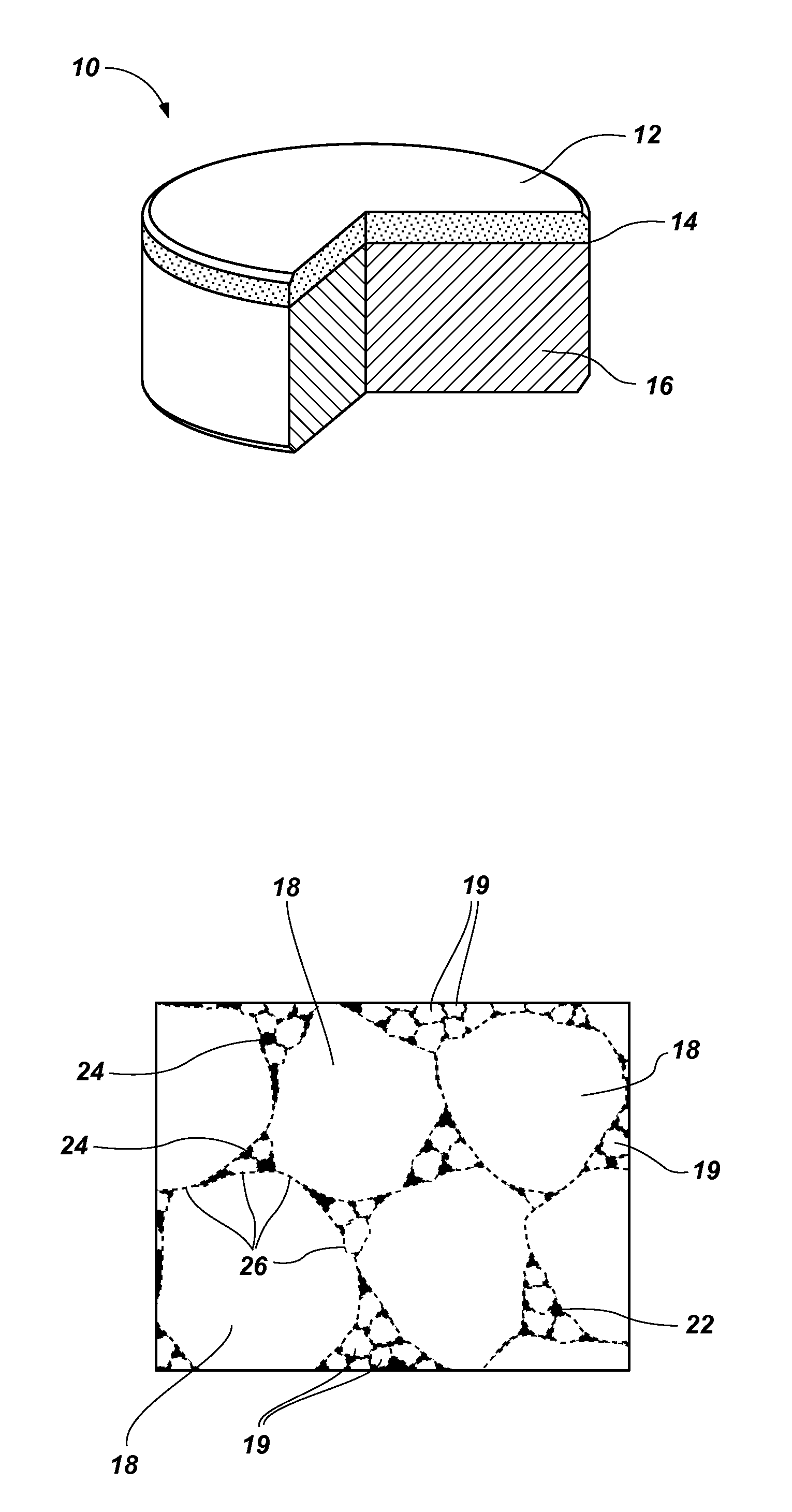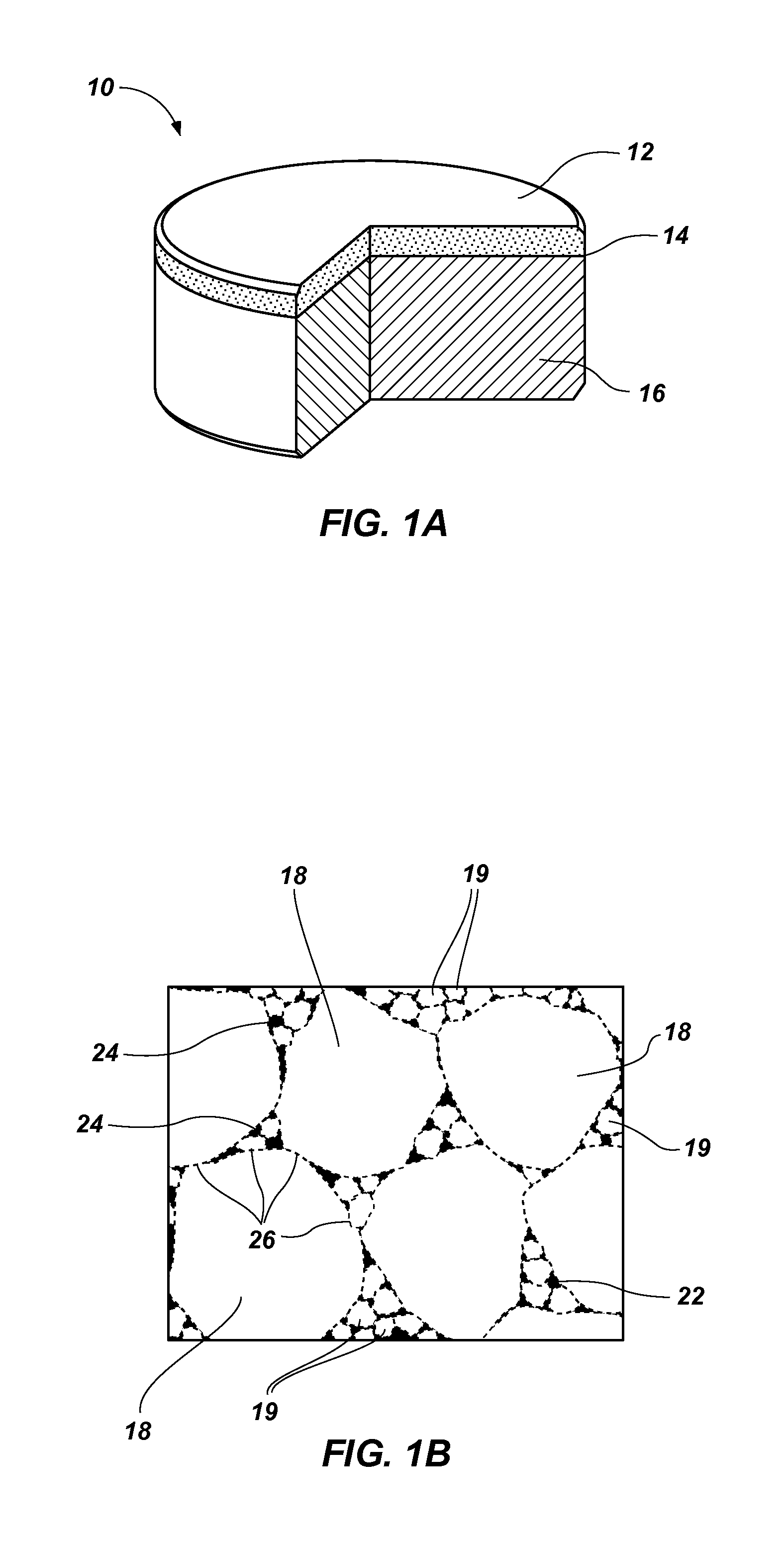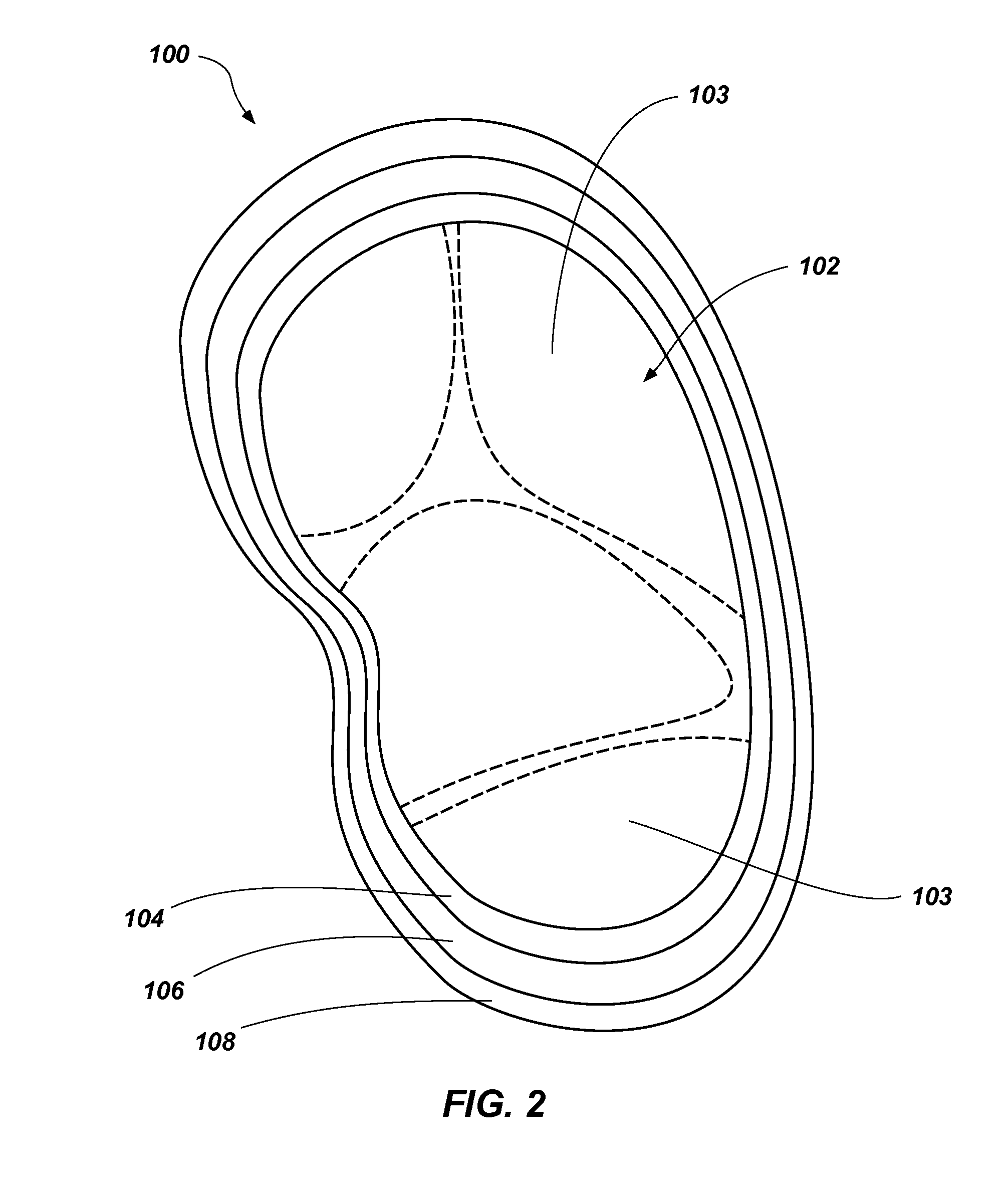Polycrystalline compacts including nanoparticulate inclusions, cutting elements and earth-boring tools including such compacts, and methods of forming same
a technology of polycrystalline compacts and nanoparticulate inclusions, applied in the field of polycrystalline compacts, can solve the problems of diamond table thermal damage, diamond table delaminate from the substrate, and relatively large compressive and tensile stresses
- Summary
- Abstract
- Description
- Claims
- Application Information
AI Technical Summary
Problems solved by technology
Method used
Image
Examples
embodiment 1
[0072] A polycrystalline compact, comprising: a plurality of grains of hard material, the plurality of grains of hard material being interbonded to form a polycrystalline hard material; and a plurality particles disposed in interstitial spaces between the grains of hard material, the plurality of particles comprising a non-catalytic, non-carbide-forming material.
[0073]Embodiment 2: The polycrystalline compact of Embodiment 1, wherein the plurality of grains of hard material comprises grains of diamond.
[0074]Embodiment 3: The polycrystalline compact of Embodiment 1 or Embodiment 2, wherein the particles comprise a refractory metal.
[0075]Embodiment 4: The polycrystalline compact of Embodiment 1 or Embodiment 2, wherein the particles comprise at least one of rhenium, osmium, ruthenium, rhodium, iridium, and platinum.
[0076]Embodiment 5: The polycrystalline compact of any one of Embodiments 1 through 4, further comprising a catalyst material in the interstitial spaces between the grains ...
embodiment 16
[0087] A method of forming a polycrystalline compact, comprising sintering a plurality of hard particles and a plurality particles to form a polycrystalline hard material comprising a plurality of interbonded grains of hard material, the particles comprising a non-catalytic, non-carbide-forming material.
[0088]Embodiment 17: The method of Embodiment 16, further comprising selecting each the hard particles of the plurality of hard particles to comprise diamond.
[0089]Embodiment 18: The method of Embodiment 16 or Embodiment 17, further comprising selecting the particles of the plurality of particles to a refractory metal.
[0090]Embodiment 19: The method of Embodiment 16 through 18, further comprising selecting the particles of the plurality of particles to comprise rhenium.
[0091]Embodiment 20: The method of any one of Embodiment 16 through 19, further comprising catalyzing the formation of inter-granular bonds between the grains of hard material.
[0092]Embodiment 21: The method of any one...
embodiment 23
[0094] A method of forming a cutting element, comprising infiltrating interstitial spaces between interbonded grains of hard material in a polycrystalline material with a plurality of particles, the particles comprising a non-catalytic, non-carbide-forming material.
[0095]Embodiment 24: The method of Embodiment 23, further comprising selecting the grains of hard material to comprise diamond grains.
[0096]Embodiment 25: The method of Embodiment 23 or Embodiment 24, further comprising selecting the particles of the plurality of particles to comprise a refractory metal.
[0097]Embodiment 26: The method of any one of Embodiments 23 through 25, further comprising selecting the particles of the plurality of particles to comprise at least one of rhenium, osmium, ruthenium, rhodium, iridium, platinum.
PUM
| Property | Measurement | Unit |
|---|---|---|
| temperature | aaaaa | aaaaa |
| temperature | aaaaa | aaaaa |
| temperatures | aaaaa | aaaaa |
Abstract
Description
Claims
Application Information
 Login to View More
Login to View More - R&D
- Intellectual Property
- Life Sciences
- Materials
- Tech Scout
- Unparalleled Data Quality
- Higher Quality Content
- 60% Fewer Hallucinations
Browse by: Latest US Patents, China's latest patents, Technical Efficacy Thesaurus, Application Domain, Technology Topic, Popular Technical Reports.
© 2025 PatSnap. All rights reserved.Legal|Privacy policy|Modern Slavery Act Transparency Statement|Sitemap|About US| Contact US: help@patsnap.com



